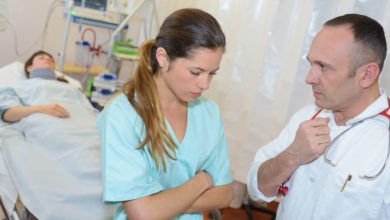Traditional allopathic medical schools can be extremely difficult to get into. Less than half of applicants are accepted every year. The average GPA and MCAT for 2016 allopathic matriculants was 3.7 and 508.7. These numbers are not easy to obtain. Many of the applicants who are rejected could become good doctors if they were given the chance. Many students see osteopathic and Caribbean schools as a chance outside of the traditional medical school route. So what is the difference between osteopathic vs Caribbean schools? If given the choice to go to either, which one should you choose?
|Read: Caribbean Schools: What to Consider?|
The answer is not so simple. Osteopathic schools are generally more respected in the medical community. This makes sense because it is actually more difficult to get into osteopathic schools compared to Caribbean schools. The average GPA and MCAT for osteopathic matriculants was 3.4 and 27 (roughly 502 on the new MCAT). But respect and reputation is not the entire equation. The most important part in deciding where you go for medical school is whether you will obtain a desirable residency afterwards. Simply put, medical students from osteopathic schools have a much higher match rate than students from international schools (including Caribbean schools). They also match to better programs. Based on 2016 NRMP data, match rates for MD students are generally in the low 90% while DO students have a 80% rate. However students from international medical schools such as Caribbean schools have closer to a 50% rate. Nevertheless, this data is somewhat misleading because Caribbean schools are combined with all other international medical schools which generally are not as good as the top 4 Caribbean schools.
Schools such as St. George’s and Ross University tend to have a much higher match rate than most Caribbean schools, some even better than most DO schools. St. George’s even posts their annual match lists online on their website. Their match list is actually pretty impressive for a Caribbean school but keep in mind that not everyone in their class ends up applying. A fair amount of students (10-15%) are “weeded out” or even discouraged to apply.
One advantage that the top Caribbean students have over osteopathic schools is that they do not have to take two board exams. Caribbean schools generally teach their curriculum so that their students do well on USMLE Step 1. DO students are required to take the COMLEX and if they want to apply to most residency programs, they also take the USMLE. Caribbean medical students also get much more time to study for USMLE Step 1 while DO schools don’t cater to the USMLE as much timewise.
|Read: Why and What of Caribbean Medical Schools|
Keep in mind that all Caribbean schools are not created equal so be wary before you commit to a Caribbean school. Try to gather as much information as possible, especially concerning USMLE Step 1 and their match list. A DO school is traditionally a mucher safer choice and investment but some students do not like having a DO degree rather than an MD degree. Generally, if you have the opportunity to go to a DO school over a Caribbean school, I would take that. However when you decide, you have to look at each school individually because not all osteopathic schools or Caribbean schools are created equal.



